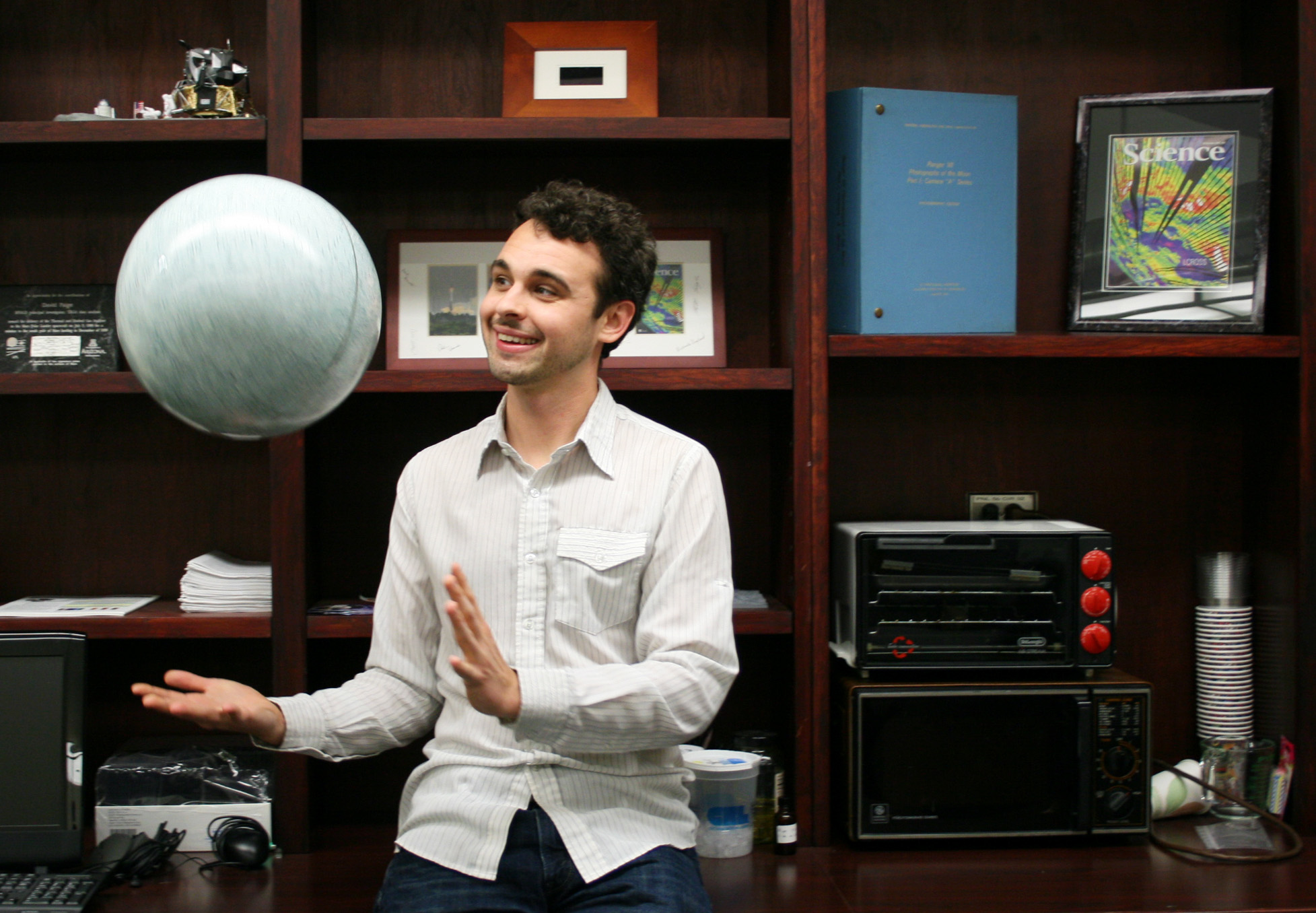Planetary astronomy graduate student plans to use film background to connect people to science

Planetary astronomy graduate student Matt Siegler does research at a California Institue of Technology lab and the Jet Propulsion Laboratory using data and samples from planets and moon.
Read more from Science & Health: Breaking Ground for Research
This article is part of the Daily Bruin’s Graduation Issue 2011 coverage. To view the entire package of articles, columns and multimedia, please visit:
By Golmah Zarinkhou
June 5, 2011 11:27 p.m.
Correction: The revised version of this article contained an error. Matt Siegler applied to UCLA Graduate School twice.
Science fiction movies drew him in as a child, but Matt Siegler said the documentary “Cosmos” inspired his passion for researching new frontiers in the universe.
“(“˜Cosmos’) made planetary exploration seem like a very human endeavor,” Siegler said. “People paint astronomy as a far-off, weird thing to do, but I never saw it that way.”
A graduate student in planetary astronomy at UCLA, Siegler uses data from Mars, Mercury and Earth’s moon in his current research, which he conducts in a lab at the California Institute of Technology and the Jet Propulsion Laboratory.
Siegler measures how heat flows through icy, Martian soils in order to determine how much ice is in the planet’s ground. Since Mars is so cold, water goes straight from solid to gas, Siegler said. Information from his research can help scientists determine whether Mars ever had an ocean or how its orbit changed over time.
Before coming to UCLA, Siegler had already participated in a number of research projects, including the ongoing Large Hadron Collider beauty experiment, an international collaboration in Switzerland studying the beauty quark to better understand why the world consists of matter.
As an undergraduate at Cornell University, Siegler worked with astronomy Professor Steve Squyres on two Mars rovers, Spirit and Opportunity, which launched in 2003.
Siegler helped build a model of the rovers, now on display at the Smithsonian Institute. He also toured museums giving talks before the rovers landed on Mars.
“It’s been one of NASA’s big missions in the last 10 years. It was neat to see it develop,” Siegler said.
Siegler applied to UCLA graduate school twice before being accepted.
“It was hard to be the one that didn’t get in,” he said. “It was just sort of a shock.”
Siegler emailed professors across the country, but only UCLA planetary science Professor David Paige replied. They bought coffee in Los Angeles, and Paige put in a good word for Siegler at UCLA.
Now Siegler’s adviser, Paige said he was looking for communication skills and an emotional tie to lab work when he first met Siegler.
“It’s not easy to become one of my students,” Paige said, adding that Siegler fits well within his research environment.
Sitting in his office chair near a painting of a Martian sunrise, Paige laughed as he explained the clear playfulness between the adviser and student.
“He’s not shy about bugging me, and I bug him too,” Paige said.
Lauri Holbrook, the earth and space sciences departmental adviser, said Siegler is very involved with the department. She said he helps keep alive the tradition of making funny videos for the department’s end-of-the-quarter party.
Holbrook said his role as an action film star trying to park in a crowded Lot 2 had her in hysterics.
“It’s a different combination than you’re used to,” Holbrook said. “He knows so much about directing and acting.”
Initially an undergraduate film student at Ithaca College, Siegler said the science classes he took were so interesting that he transferred to Cornell University to major in both physics and film.
He said he decided to merge his science and film education and teach the larger community about the workings of the world.
But when Siegler walked up to renowned Civil War documentary filmmaker Ken Burns and said he wanted to do for science what Burns did for history, Burns told him people would never connect to science the same way.
However, Mae Jemison, the first black female astronaut, gave Siegler different advice about his goals. She told him to be himself and not his heroes.
Where he goes from here in teaching science through film or as a professor is a matter of opportunity, although he knows he wants to explore and teach about the dynamic field of science, Siegler said.
“It’s exciting to figure things out, to understand the universe in a way you didn’t before,” Siegler said.
For now, he is employed as a tour guide at Griffith Observatory. He said he wants to partake in science education as a graduate student and remain able to connect with people.


